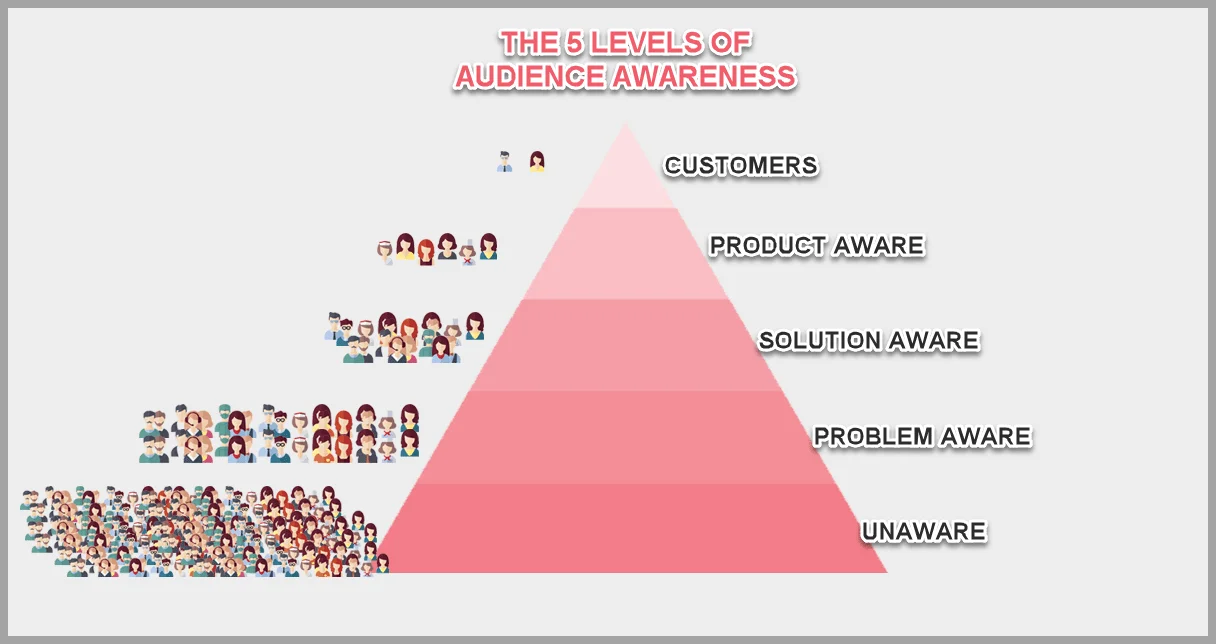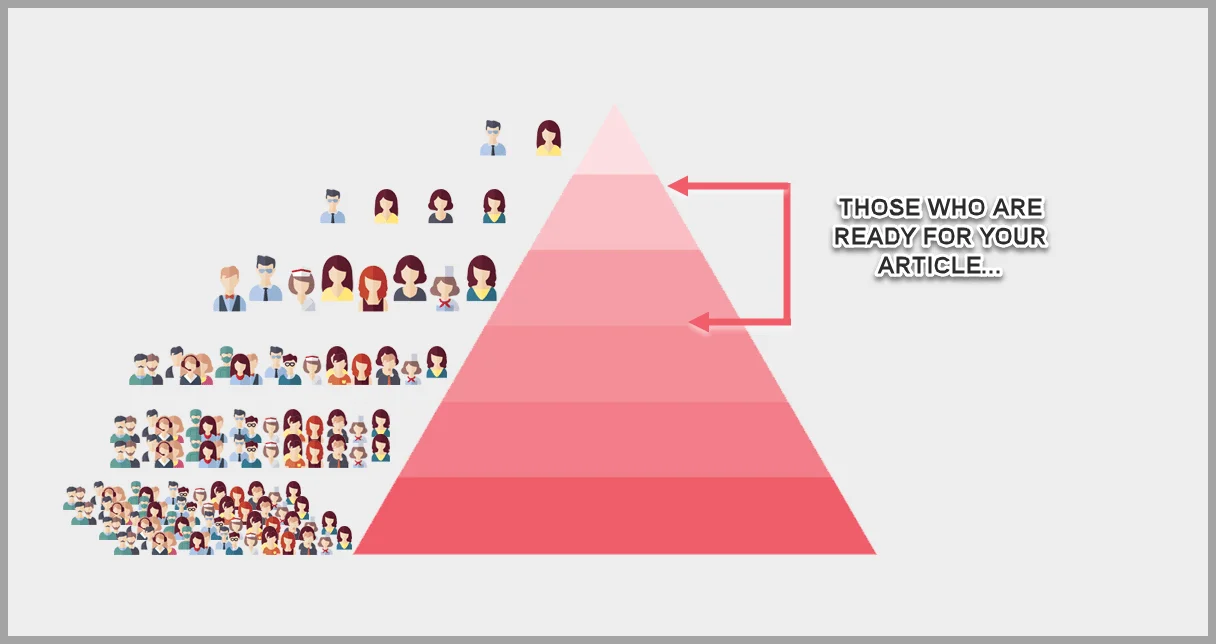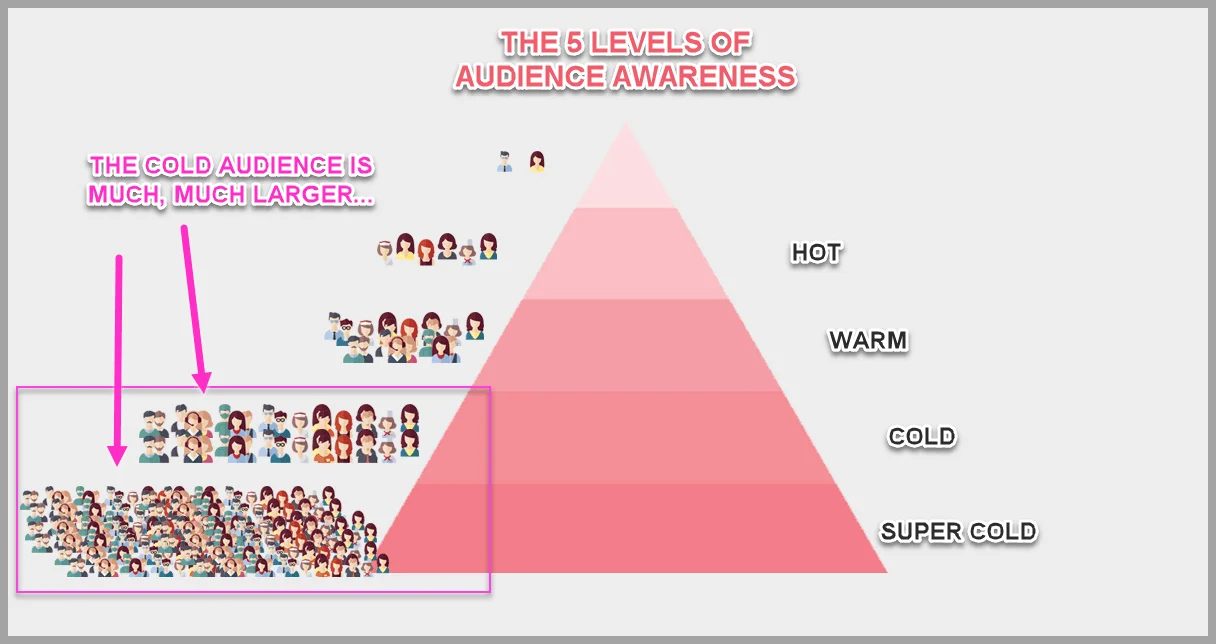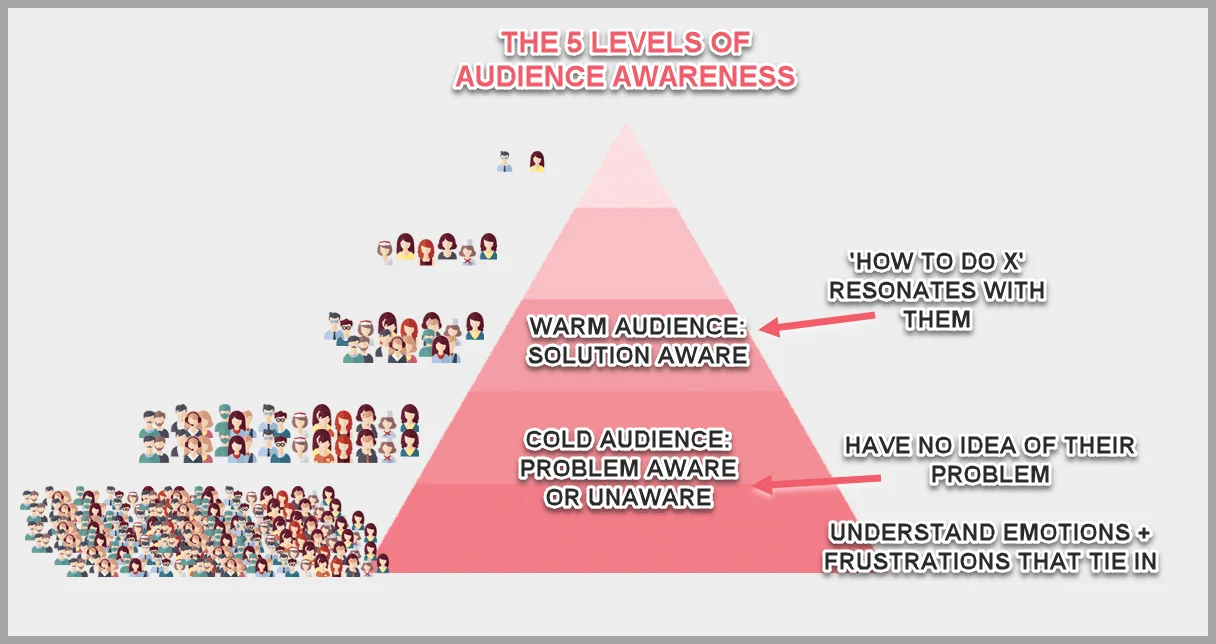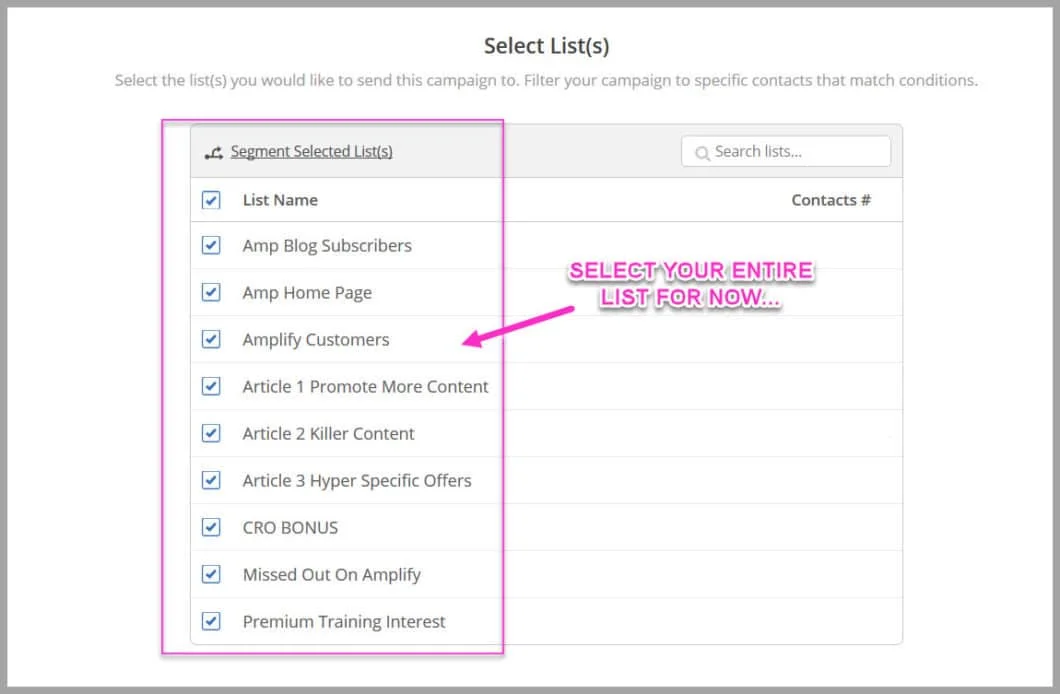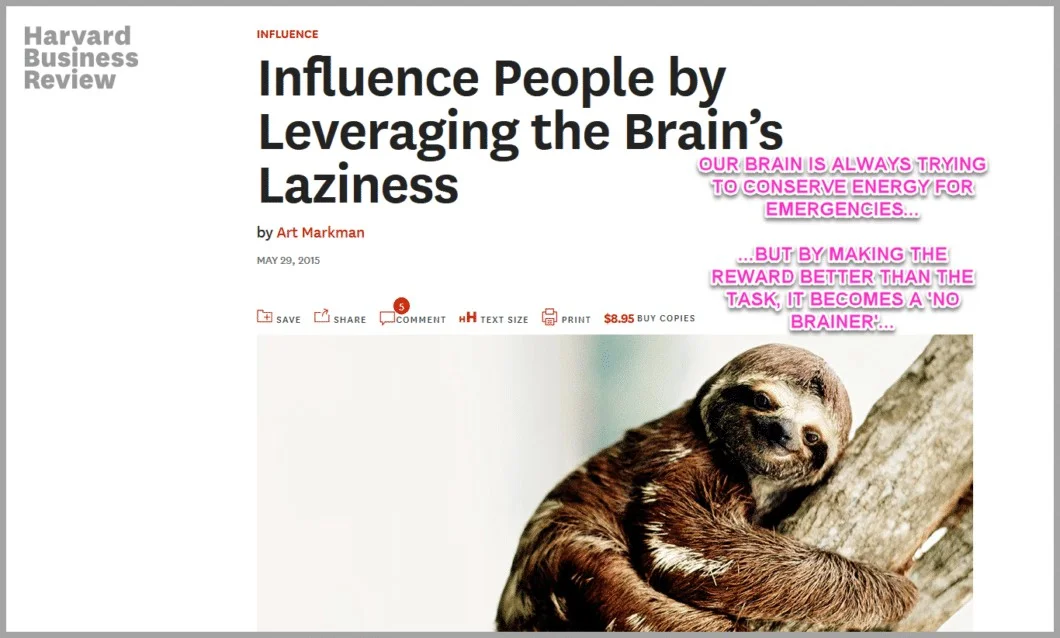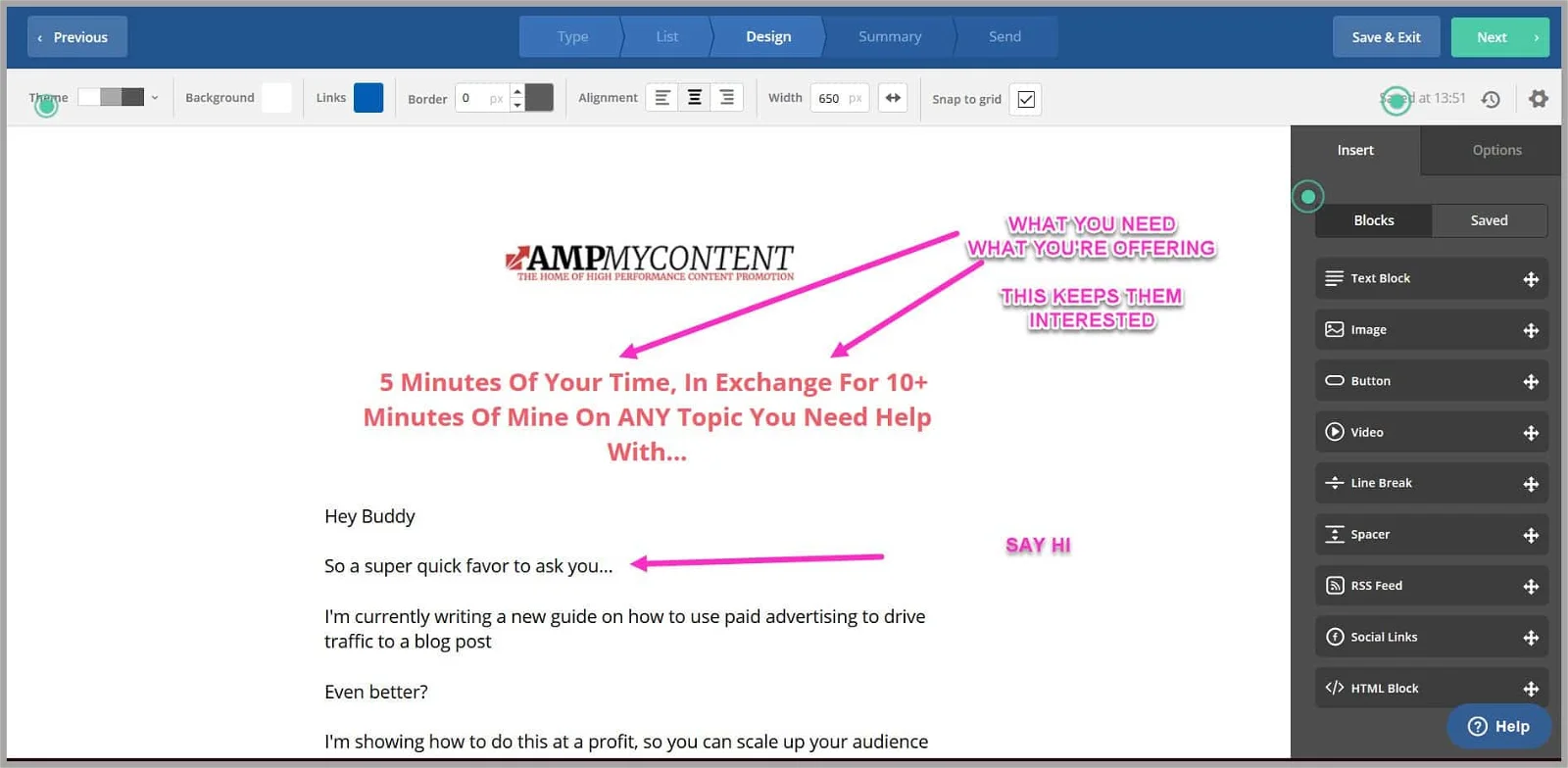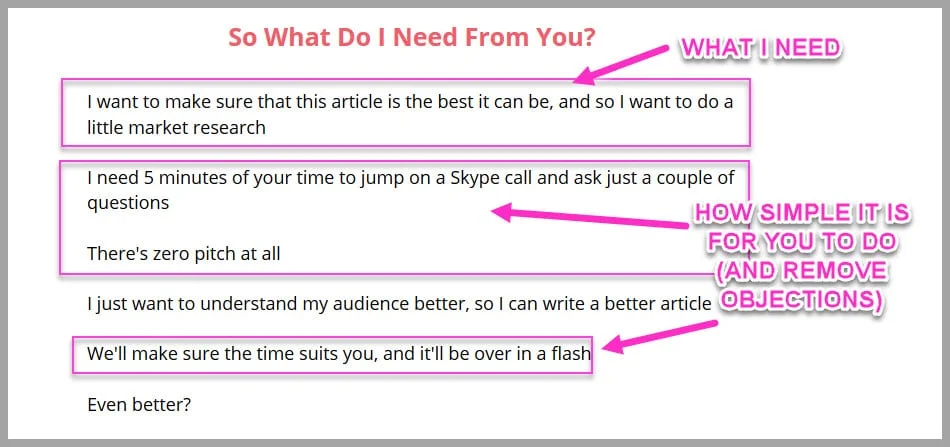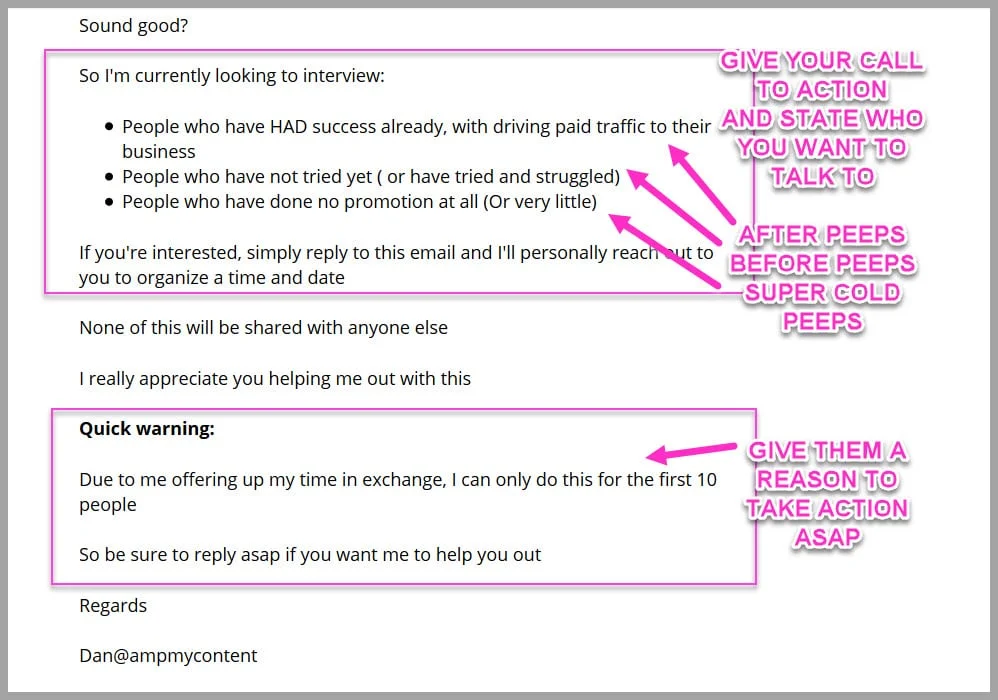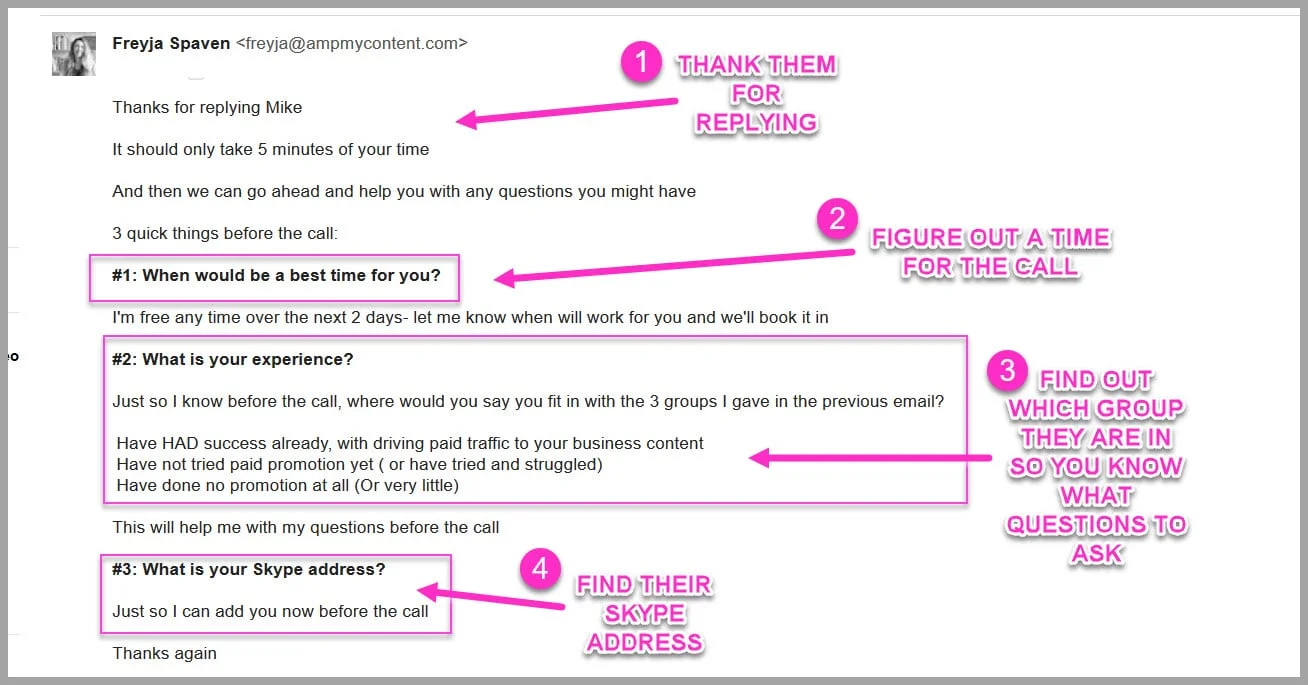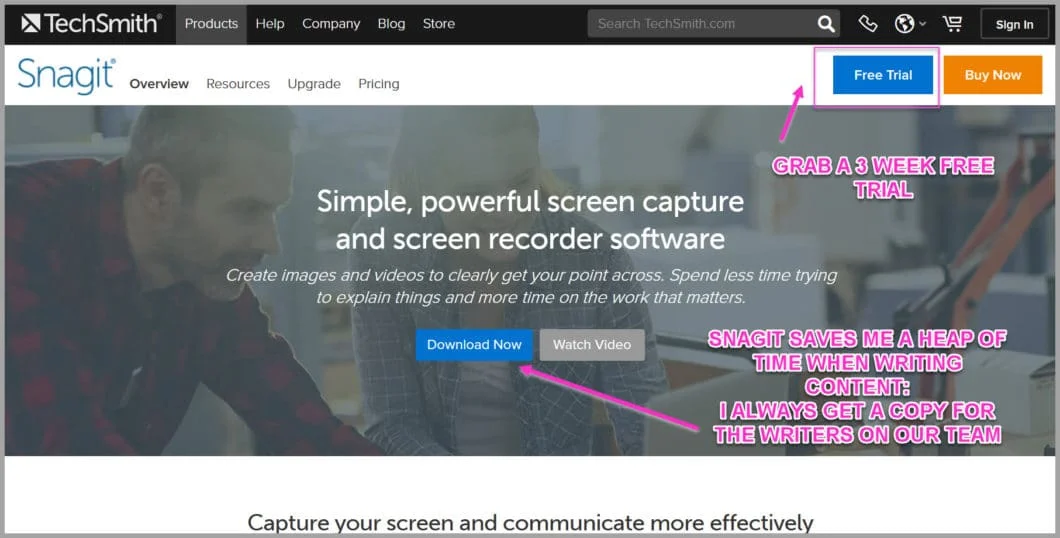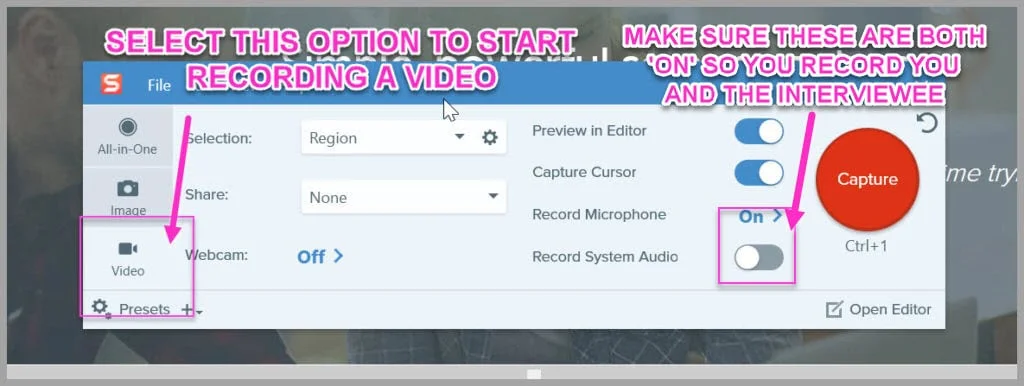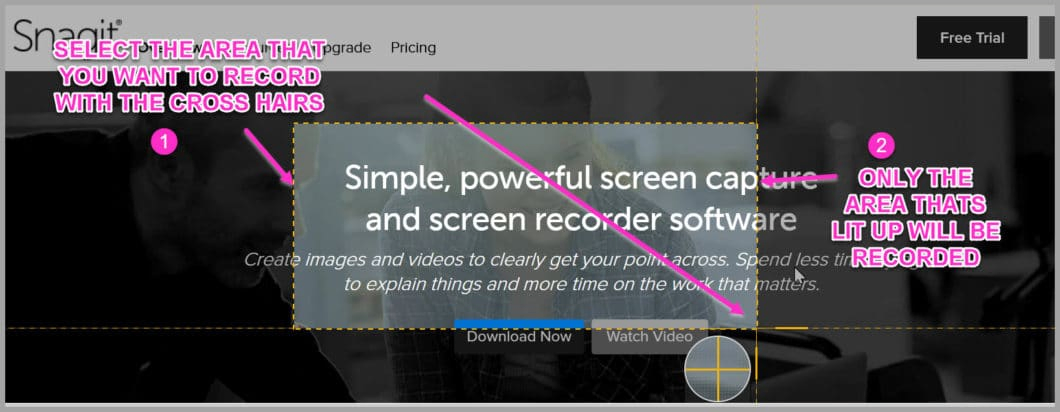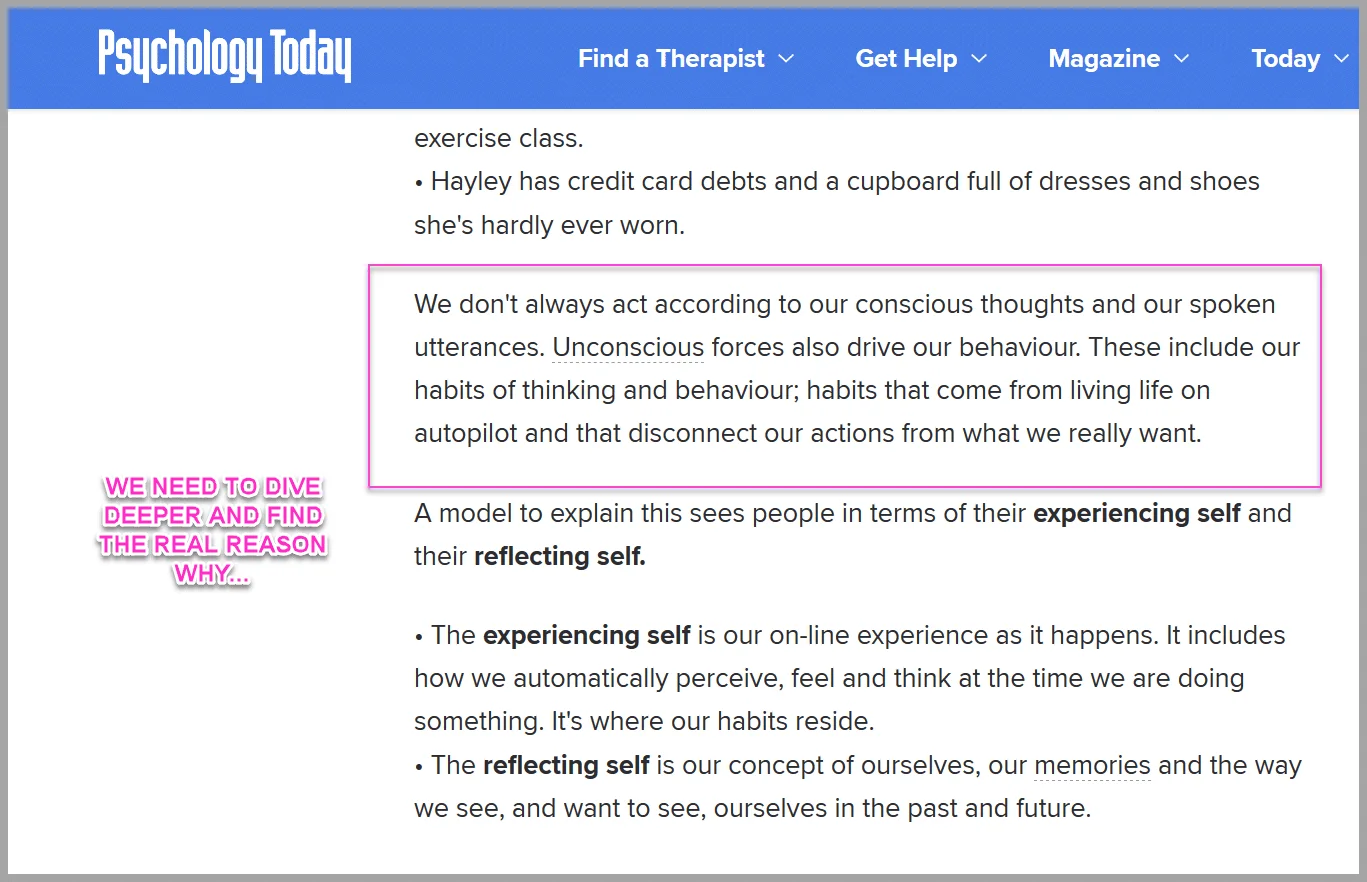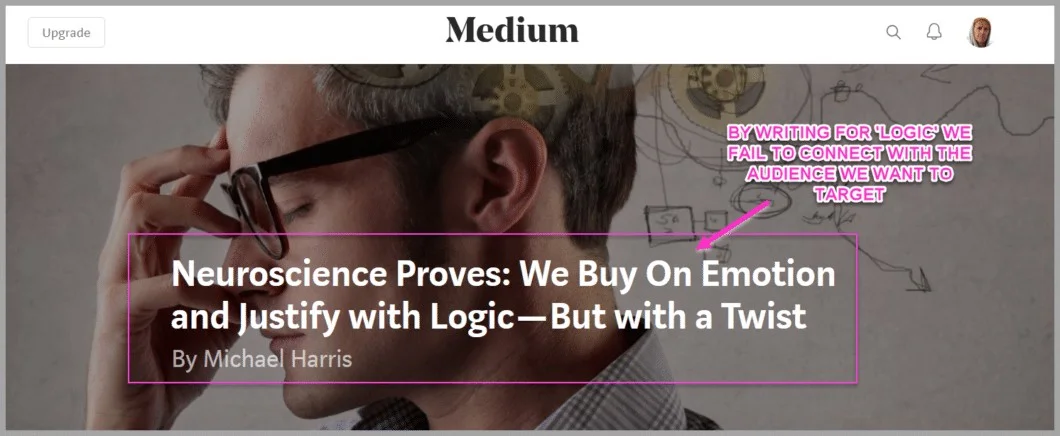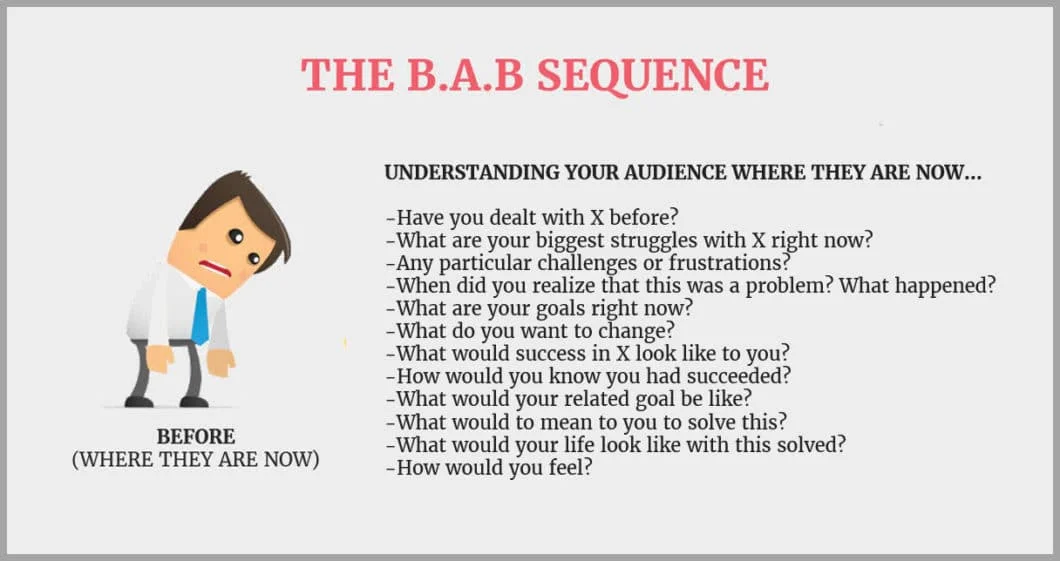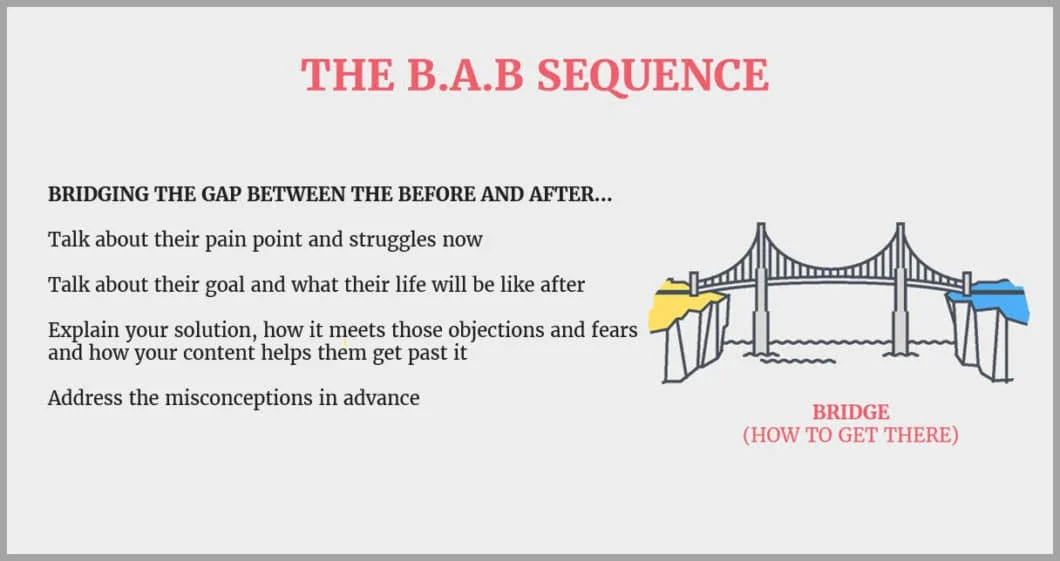There’s no way around it. Most marketers create ads that fail.
Its not the image or the design that’s the issue. Its not even the technical set up of the ad.
The biggest issue is having the wrong message.
What do I mean?
Well, Facebook makes it super easy for us to target the right people, but its up to us to write an ad that converts. Fortunately, its not that hard to know what to write to make your audience take action, and all it takes it a little research.
Because when you can actually write ads that connect?
Ads that drive traffic from people who’ve never even heard of you before, from people who didn’t even know that they wanted what you have?
That’s when you can scale like never before!
Keep reading to learn how…

 |
 |
|---|---|
 |
 |
 |
 |
 |
 |
Copywriting For Cold Audiences: How To Drive Traffic To Your Content From Brand New Fans
There are 3 parts to a successful advert:
- The image
- The ad copy
- And the targeting
Setting it all up is easy
That’s why there’s so many articles on it…
The only problem?
You can’t get ads that drive results, without first understanding your audience
That’s why this chapter is all about research
Diving into your customers head and finding their deepest, darkest desires
Why care?
Because the more you understand your audience, the easier it is to write, design and set up a high performing advert…
Better still?
When you understand your audience and what actually motivates them?
That’s when you can scale your business like crazy…
The 5 Levels Of Customer Awareness
There are 5 levels of ‘customer awareness’
- Super Hot (Ready To Buy)
- Hot (Looking for solutions)
- Warm (Know what the problem is, just not how to solve it)
- Cold (Aware of a frustration or issue)
- Super Cold (Not even aware they have a problem)
These represent all the people out there, who could become your potential customer
Now most people will target the hottest audience with their ads
Why?
Because they’re easy to convert…
You simply tell them about the thing, and then direct them to it
Easy right?
The only problem?
Warm audiences make up a much smaller segment of your potential customers….
This means you’re limited on how much you can grow
Not only that?
Because everyone else is targeting them?
This makes them suuuuuper competitive…
Fancy paying $18 for a click?
Yeah me neither…
So what can you do?
You go for the low hanging fruit…
The Beauty Of Cold Audiences
I love marketing to a cold audience
Why?
How about the fact that they make up about 80% of your audience?…
And because they’re a larger audience?
It means there’s far less competition, which then helps lower ad costs…
Better still?
Because the audience is much larger, it means there’s no cap on how much you can grow
The only issue?
Cold audiences are a little more difficult to write ads for…
Don’t get me wrong…
Writing for cold ads is almost the exact same process as before:
“Do you want X? Then here’s Y’
The main difference?
Its understanding the audience and where they are now
Their pains, frustrations and goals
That’s how you connect with a colder audience
Why?
Because writing about a warm problem just doesn’t resonate with them
(Some of them might not even know about the problem yet)
So all you need to do?
Is simply pay attention to them…
The 3 Simple-Steps To Using ‘Voice Of Customer’ Research
There’s just 3 easy steps
Step #1: Find people in the ‘before’ and ‘after’ state
Step #2: Organize a 15 minute chat with both
Step #3: Ask specific questions to find their pains and desires
Easy right?
Here’s why it works so well…
Content marketing is all about the conversation
You’re the middle man who connects the dots
Your goal is to take someone from where they are now (Before state where they have the problem), to where they want to be (After state where the problem is solved)
By interviewing people in both states, you can understand their issues and desires, and how your content connects with them
Better still?
You can find the language that they use to describe these issues
Why care?
Because people want to be listened to
They want to be heard
If you can understand their issues and how they describe them, then it means you can write an ad that gets them to pay attention
Not only that?
Because you ad describe their problem like your in their own head?
Suddenly you’re the ONLY option for them…
Step #1: Reach Out For Interviews
I’m going to assume that you have an audience already
You’re going to reach out and interview 2 types of people:
- Your customers,
- Your subscribers (Not yet customers)
By understanding how they feel at the start and at the end of the journey, you can then connect the dots with our advert
Make sense?
OK so lets get started and email your audience
Go ahead and open up your email CRM and write a new broadcast email…
You want to target ALL of your audience with the one email
This way you can call out to both the success stories, and the people in the before state, in the same email
Go ahead and select your entire list
Then you need to write a quick email about the upcoming interview
In the headline simply:
- Tell them you want a quick chat
- And tease a bonus for those who agree to chat with you…
This helps to both appeal to the right people AND to build curiosity for them to open the email and find out more
Yep, you’re going to offer a bonus in return for their time for the interview
Why?
Because people are inherently selfish
Well actually their brains are…
The brain is always looking for the simplest option to save energy
Why care?
Because if you request seems like too much effort with little reward in return, then you won’t get any replies
That doesn’t mean your bonus needs to be huge though
It just needs to be enticing enough to get them to take action
It could be 10 minutes of your own time to chat about any issues they might have
(Which is great for further research so win:win)
So now you need to write the email…
It needs:
- Headline recapping the need and the bonus
- A quick introduction
- What you need from them, and why
- What you offer in return
- A promise of zero pitch or sales offer
- Tell them who the audience is that you want to speak to (This will help them identify)
- CTA to reply to the email
So lets break down each part…
The Headline
Super simple
The headline should quickly mention what you need and the bonus…
Easy right?…
The Introduction
Quickly say hi
Then go into what you need…
What You Need From Them (And Why)
Start with telling them what you’re doing
In my email I let them know about my new article, and that I’m doing market research…
That’s right
I will actually interview the audience in advance of writing the article WAY BEFORE I even write the advert
(This way I can make sure the content resonates with the audience also)
Once you’ve done that, go ahead and tell them what you need…
Be sure to also…
Tell Them How Quick And Simple It Will Be
Remember that brain wanting to save energy?
Same principle
Right now they are thinking
“How long will this take and what do I need to do?”
So let them know how easy it is:
“It takes 5 minutes and its as simple as chatting over Skype”
If it seems easy and worth their time, you should get responses…
Remove Any Objections
At this point, some of your audience might think
“Hmmm… Am I going to get pitched?”
You want people to reply right?
So give them some peace of mind, and tell them you’re not going to pitch them
Then once you’ve done that, tell them about the bonus…
Make sure you make the bonus easy to deliver on, but also super enticing for the reader
Why?
Because it has to feel like they are getting a great deal
Even if its something that they want, people need to be sold on it
So make them see how good the bonus is!
Once you’ve talked about the bonus, make the call to action for them to reply to your email…
Be sure to:
- Ask them to reply to the email if they are interested
- And tell them WHO you are looking to interview
You need to make sure that you’re speaking to people both in the before AND after states
Notice in this email I even reach to those with zero experience on the topic
Why?
This will give me a great frame of reference for those who are a suuuuper cold audience on this topic
(But still relevant as they are on my email list…)
I’ll be able to understand
- Those who don’t even know about the problem
- Those who have the problem and not sure whats causing it
- And those who overcame the problem
By speaking to these 3 types of people, and understanding their needs, I can craft my ad
Easy right?
Now all you need to do is wait for the replies to come in…
Step #2: Organise The Call
Once you get those emails back, its time to reply to them
Take the time to reply one by one
- Start off by saying thanks
- Then ask them where they fit out of those 2 or 3 audience options you gave(So you know in advance)
- Then ask them for a time that would work for them
I recommend you try and get 3-5 interviews if possible from both the before, and after groups
It may seem like extra work now but trust me
This will save you a LOT of heartache and wasted ad spend, later down the line
Now that you have the calls lined up, its time to question them…
Step #3: The Interview
Its REALLY hard to make notes during a call
Instead, I recommend you use recording software like Snagit
Its super easy to use
You can record video or audio
(Its also super helpful for adding and editing images when writing content- its how I added all these screenshots etc in this article)
Record your call so that you can transcribe it and use later when writing your ad…
Feel free to use Snagit or whatever software you prefer
I HIGHLY recommend you record the interview
Not only does it make it easier, but you’ll usually find much better answers or insights on a 2nd or 3rd listen…
Preparation: 1 Hour Before The Call
You want to make sure the software is all working
An hour so before the call, quickly test it
Make a short recording and see that the audio is working…
Simply record, and then play it back and make sure you can hear it etc
If you use Snagit, then be sure the settings are:
- Record the mic, and
- Record system audio
This way it’ll record you AND your interviewee…
During The Call
Start off by saying hi and get them comfortable
They might be freaking out a little bit, so try and break the ice
Then tell them how its going to work:
- You’re going to record the audio but not share it
- (Its so you can then use that to help make sure you don’t miss anything)
- You’ll ask them a few questions to try and learn about the topic more, to help people who are just like them – and so you don’t miss anything out
Then once you get that out the way, its time to start asking questions…
How To Ask Question’s That Get Honest Answers
Humans are strange
We never say what we really think, or act like we say we do
Its to do with how we function in society
This means that when you interview your audience, the answers might not be quite correct
They try and give you the answers that they think YOU want to hear…
…rather than the truthful answers
They’re not trying to mislead you, they’re actually trying to help you
But the thing is?
Those ‘surface level’ answers won’t resonate with the rest of the audience…
Let me explain:
People buy with feeling and emotion, and they justify it with logic
When we market, we almost always talk to that logic… and that’s why the ad usually doesn’t work that well
Those answers that they give you?
Its usually the logical reason that they think they ‘should’ give, and not the real reason behind it
If you don’t go deeper with our questions, then their answers won’t resonate with your other readers
This leads to writing ads that won’t perform
You NEED to find the actual emotion behind that reason…
Socratic Questioning And The ‘5 Whys’
We’re going to give you 2 list’s of questions in a second
One list is for people in the before state
The other is for people in the ‘after’ state
These questions are designed to find specific answers that will help you create your advert:
- Pain points,
- Goals and Desires
- Struggles and frustrations etc
These questions help you build the ‘bridge’ between where they are and where they want to be
But it only works, if you get the REAL reasons…
Let Me Explain:
I recommend using a blend of ‘Socratic’ questioning, and ‘The 5 why’s’ problem solving from Toyota
Socratic Questioning 101
Socratic Questioning is about trying to get the interviewee to reflect
To get them to think critically about their own answer and the reason behind it
‘Why do you say that?’,
‘Could you explain further?’
By asking this question, you can move them away from giving the answer they think we want to hear…
…And instead towards giving the REAL reason behind it
This is where the gold is
Not only that?
You want to pay attention to not just the reasons they give, but the actual words they use to describe this pain or desire
We call this their ‘mirror language’
Its the real pain or desire and the words that reflect it best
Why care?
Because this is the language that what will make your advert that really resonate
Lets take it a step further…
The 5 Why’s Problem Solving
The 5 why’s is a method of problem testing products
Its taking that Socratic questioning and then going 5 steps deeper
Why do this?
Because it helps you to find the root cause behind the answer
If you want to get really great answers and insight?
Then always delve deeper…
For Example:
Question
” Why have you not tried paid promotion before?”
Answer
“I’ve never tried paid ads, because I don’t know where to start “
But if you delve deeper and ask why they gave that answer?
- Why #2? – I’m worried it might be a waste of money (Second why and a deeper reason)
- Why #3? – I’m worried my content isn’t good enough to be promoted (Third why and more emotional now)
- Why #4? – Being out in front of people is scary.The more people who see my content, the more rejection I might face (Fourth why and deeper emotion that resonates)
- Why #5? – What if people think I’m a fraud?..
If you look at this, the 5th why is actually the real reason
Its the root cause of the issue
Understanding your audience at this level is how you create ads that convert…
Important:
Don’t put words in their mouth or lead the answer
Just try to get them to think again about their own answer, and get a response
The more you ask, the better the answers and the better your ad will perform
So now you have that, lets talk about the call itself…
Voice Of Customer Questions:(For Interviewing Those In The ‘After’ State)
So we’re interviewing 2 types of people
Those who haven’t got past the problem, and those who have
We call them these 2 groups, the ‘before’ and ‘after’ state
For the ‘after’ audience, you’re trying to get a picture of what life is like
How has their life changed now that the problem is removed?
This then helps you describe the desire to those in the before state…
- What are your results with X so far?
- Looking back, what was your biggest struggle with X?
- Where there any particular challenges or frustrations?
- Did you have any doubts or worries about solving X?
- How did this tie into your goal?
- How did you know you had succeeded?
- How has your (goal related to X) changed?
- How has your life changed?
- What would you tell people just like you, who are struggling with X?
By finding the answers to these questions, you’ll be able to describe the end goal to your cold audience
Even better?
You’ll get insights to language and fears that ‘before’ state customers may not even know we’re stopping them yet…
Voice Of Customer Questions:(For Interviewing Those In The ‘Before’ State)
So these questions are a little different
You’re going to learn more about those who are struggling right NOW
These are the people who still have the problem
By speaking to these people, you get to understand your target audience
You understand their desires and problems in their own language…
(Just like before, keep asking why to find more about the answer that they give)
- Have you dealt with X before?
- What are your biggest struggles with X right now?
- Any particular challenges or frustrations?
- When did you realize that this was a problem? What happened?
- What are your goals right now?
- What do you want to change?
- What would success in X look like to you?
- How would you know you had succeeded?
- What would your related goal be like?
- What would to mean to you to solve this?
- What would your life look like with is solved?
- How would you feel?
The goal of these 2 interviews is to be able to bridge the gap and help your audience connect the dots
The beauty of interviewing those in the before state?
You can use this conversation as a soft attempt at bridging your article, as the solution to their problem…
Test Pitch For Your Article
So you’ve just listened to your audience and their problems
If you think your article can help solve that, then now is a great time to try and tell them about it
Why do this?
Because this can then help you hear any new objections…
Remember:
Its not a paid pitch, nor are you trying to make a sale
You’re simply trying to understand their problem and help them connect the dots to want to read your new article…
- Use the mirror language that they used
- Talk about their pain point and struggles that they have now
- Talk about their goal and what their life will be like after
- Explain the solution article, and how to meets those objections and fears, and how it helps them get past it
- Listen out for new objections and reasons that they give at this point
This will give you SOLID GOLD research for when you come to write your advert
If I’m totally honest?
Because you took the time to listen, they probably want what ever you have to offer right now
And if they’re still not interested?
Then you get to hear why, and it helps you improve your advert…
Using The Information
Once you’ve finished the interview, thank them for their time
If you’ve offered up a bonus session then deliver it now
Top Tip:
Keep recording as it’ll give you more insights
Once you’ve finished, simply save the recording, and then write it up for your own reference
(This will help you scan it later on when writing your ad)
Its easy to do:
- Press play and listen to 30 secs
- Pause
- Write it out EXACTLY word for word, for what you hear
When you’ve finished, go through the results and look for common issues and fears that arise
Look for that ‘voice of customer’
Listen to their problems and goals, and the language that your audience uses to describe this
You can use this to create your ‘Hook’ and write your ad in the next lesson…

 |
 |
|---|---|
 |
 |
 |
 |
 |
 |

